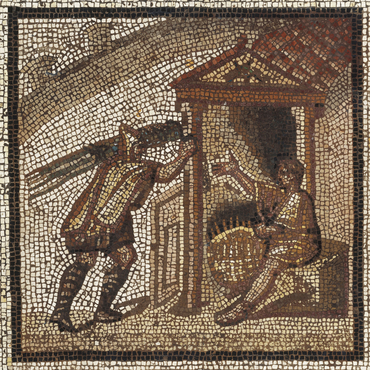
- Home
- The Roman villa: source texts and archaeological evidence
- The villa in Roman Gaul
- Productions and activities
Producing for the population of an estate and for the reproduction of its workforce is the goal of a farm that wants to limit its expenditures. Nevertheless, the discovery, during excavations of a villa, of a plethora of objects of various provenances does not plead in favour of a system of economic independence, as ancient authors appear to have recommended.
For such estates, however, production for trade was the raison d'être. To satisfy the increased consumption of wine that went with the Romanisation of eating habits, large landowners in Gaul often focused on wine-growing. In provinces with denser population patterns, trade in grain and meat for urban markets also offered possibilities for speculation. Recent environmental scientific research has expanded our knowledge of what was produced on estates.
Astute owners were not averse to capitalising on their estates' resources via such activities as stone-quarrying or creating ceramics or tiles. Livestock and harvested plants provided excellent opportunities for this sector. The proximity of roads and waterways offered reasons to invest in commercial transport or hospitality services for travellers. Collecting taxes, when the owner was a rural representative of public authority, was another source of revenue.



